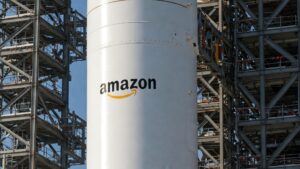So picture this: Bhavish Aggarwal is already crushing it with Ola Electric Cabs (basically India’s Uber), when he gets this crazy idea to completely flip India’s transportation scene on its head with electric vehicles. I mean, who does that? It’s 2017, Ola Cabs is making serious money, and this guy looks at the smog-choked cities and India’s wallet-draining oil imports and thinks, “Yeah, I should fix that.” Instead of just talking big at dinner parties like the rest of us would, he actually launches Ola Electric with this bonkers goal of putting a million electric vehicles on Indian roads by 2022. Talk about ambition!
The Birth of an Electric Vision

The road to electric wasn’t exactly smooth sailing, you know? Remember how just a few years back, mentioning electric vehicles would get you those skeptical looks? People would immediately start with the “but what about the range?” and “where would I even charge it?” questions. Ola Electric had to deal with all that doubt – and in a market where most people are buying vehicles on tight budgets!
But here’s where Bhavish’s approach gets really interesting – instead of taking the easy route and just importing some EVs to sell, he goes completely bonkers (in the best way) and decides, “We’re going to build these babies ourselves!” In 2020, Ola announces they’re building this absolute monster of a factory in Tamil Nadu. I’m not even exaggerating when I say this place is MASSIVE – we’re talking 500 acres dedicated to pumping out 10 million scooters every year. That’s literally one scooter rolling off the line every two seconds when they’re at full throttle! The factory itself is an eco-nerd’s dream come true – tons of renewable energy powering it and robots handling production like something straight out of a sci-fi movie.
Making a Splash with the S1 Series
August 2021 rolls around, and Ola drops their first electric scooters – the S1 and S1 Pro. And let me tell you, these weren’t your grandpa’s scooters! They looked sleek and modern with features that made tech geeks drool: 121 km range (goodbye range anxiety!), speeds up to 115 km/h (zoom zoom!), and this super cool mobile app that let you control pretty much everything. Plus, they came in these Instagram-worthy colors with names like “Marshmallow” and “Millennial Pink” that had everyone talking.
The response? Absolutely bananas! Ola claimed they sold ₹600 crore (that’s about $80 million!) worth of scooters in just 24 hours when sales opened. I mean, no one – and I mean NO ONE – had ever seen anything like this for an automotive launch in India, let alone an electric one. Suddenly owning an electric vehicle wasn’t just about being environmentally conscious – it was actually… cool?
Building an Ecosystem, Not Just Vehicles
You know what I find super clever about Ola’s whole approach? They didn’t just stop at making scooters. They’re building this entire ecosystem – kind of like what Apple did with tech. They’re rolling out these charging networks (called Hyperchargers), working on battery swapping systems, and even created their own operating system (MoveOS). It’s like they looked at the EV landscape and said, “Let’s control EVERYTHING.”
Their Hypercharger plan sounds like something a child would dream up – 100,000 charging points across 400 Indian cities! Are they there yet? Not even close, but the sheer audacity of the vision shows you how Bhavish and his team think. And the MoveOS is pretty brilliant too – your scooter actually gets BETTER over time with software updates. When was the last time your gas-guzzler improved after you bought it? Yeah, exactly.
Growing Pains and Challenges
But – and this is a BIG but – the journey has been super rocky. Early customers were pulling their hair out waiting for deliveries that were months late. Social media was flooded with complaints about quality issues ranging from annoying software glitches to “Oh my god, why is my brand new scooter doing this?!” type problems. Customer service was completely overwhelmed, which only made angry customers even angrier.
And then came the real nightmare scenario. March 2022 – an Ola scooter catches FIRE in Pune. Then other EV manufacturers start seeing similar incidents. Suddenly everyone’s asking if these lithium-ion batteries can handle India’s brutal summer heat. The government got involved, investigations were launched, and Ola had to recall certain batches. Not exactly the publicity they were hoping for!
The “Future Factory” was facing its own drama too. Getting it to full capacity was taking way longer than expected, and pandemic supply chain chaos wasn’t helping. Some industry folks were whispering that Ola had put too much focus on flashy marketing instead of making sure their manufacturing was actually ready for prime time.
Financial Journey and Investment Landscape
On the money side, though? Absolutely wild success! Ola Electric hit unicorn status (that magical $1 billion valuation) almost immediately after spinning off from the parent company. By late 2022, they were valued at over $5 billion after raising around $850 million from big-name investors like SoftBank, Tiger Global, and Falcon Edge. Talk about investor confidence!
Early 2024 brought their IPO, making them India’s first listed company focused purely on EVs. The offering was so popular it was oversubscribed multiple times – despite the fact that they weren’t even profitable yet! This IPO was a game-changer, giving them access to public market money that’s crucial for funding their absolutely massive expansion plans.
They’ve also been getting some sweet support from the Indian government’s FAME scheme (Faster Adoption and Manufacturing of Electric Vehicles), which includes subsidies for both manufacturers and consumers. That’s definitely helped make the numbers work better for everyone involved.
Beyond Scooters: Expanding the Electric Portfolio

But Ola isn’t just stopping at scooters – that would be way too simple for Bhavish! In August 2022, he unveiled designs for their first electric car, aiming to get it on roads by 2025. The concept looked super slick, with some pretty bold claims: 500km range and 0-100 km/h in under 4 seconds. Will it actually deliver all that? Who knows, but it definitely shows they’re planning to play in multiple vehicle categories.
They’re even planning to make their own battery cells – the most expensive part of any EV. By bringing battery production in-house, they’re trying to cut costs and reduce dependency on imports (mainly from China). It’s a risky strategy that could either be a masterstroke or a massive headache – but you’ve got to admire the boldness!
And that’s not all – they’re eyeing commercial vehicles too. With delivery and logistics companies under pressure to go green, Ola sees a huge opportunity in electric delivery vehicles. They’ve started talks with e-commerce companies about purpose-built delivery vehicles that could save on operating costs while helping the environment.
Mission-Driven Approach and National Impact
What I really love about this whole story is how Bhavish positioned Ola Electric as more than just a company trying to make money. He’s framed it as this mission-driven enterprise focused on reducing India’s carbon footprint and slashing the country’s dependency on imported oil. And that’s no small deal – India spends over $100 billion every year on oil imports, with about 30% of that going to transportation.
Bhavish hasn’t been shy about this mission either. In interviews and industry events, he’s called out traditional automakers for dragging their feet on electric vehicles and positioned Ola as not just a business but a movement toward sustainable mobility for India. It’s pretty inspiring stuff!
This approach has really resonated with customers who feel like they’re part of something bigger when they buy an Ola scooter. They’re not just getting a vehicle; they’re casting a vote for a cleaner, more sustainable India. And it aligns perfectly with the government’s goal of having 30% of all vehicles be electric by 2030.
Competitive Landscape and Market Response
Ola’s aggressive entry into the market has definitely lit a fire under the established players! Companies like Bajaj, TVS, and Hero MotoCorp – who’ve dominated the Indian two-wheeler scene forever – have all had to speed up their own electric plans to avoid being left in the dust.
This competition is actually awesome for consumers and for electric vehicle adoption in general. More choices, better prices, faster innovation – what’s not to love? Of course, it also means Ola no longer has the first-mover advantage they initially enjoyed. They’ve got to keep pushing the envelope to stay ahead.
And it’s not just domestic competition they need to worry about. International players like Taiwan’s Gogoro (famous for their battery swapping tech) and various Chinese manufacturers are eyeing the Indian market. The party’s getting crowded!
The Road Ahead: Challenges and Opportunities
Looking ahead, Ola Electric still has some serious mountains to climb. For one, they need to actually start making money – like many startups, they’ve prioritized growth and grabbing market share over immediate profits. But manufacturing vehicles is incredibly expensive, and they’ll need to carefully manage their cash burn while scaling up.
The charging infrastructure in India is still WAY behind what’s needed for mass EV adoption. Ola is building their own network, but they need to accelerate dramatically to support all the vehicles they want to sell. They can’t do it alone – they’ll need to work with other companies and get government support to make it happen.
And there’s still a ton of consumer education needed. People worry about range, they’re uncertain about resale value, and they’re concerned about maintenance costs. Ola needs to keep investing in education and marketing to overcome these barriers.
Despite all these challenges, the opportunities are mind-blowingly huge. India’s two-wheeler market is the biggest in the world, with over 20 million units sold annually. Capturing even a fraction of that would be massive. And as battery costs keep dropping and charging options improve, electric vehicles are becoming more and more appealing from a pure dollars-and-sense perspective.
Whatever happens with Ola Electric specifically, they’ve already changed the conversation around electric vehicles in India and forced traditional automakers to take EVs seriously. In my book, that alone makes their journey an incredible success story in India’s green mobility revolution!
References
- Ola Electric’s Rollercoaster Journey: From Scrappy Startup to EV Leader
https://www.91infra.com/news/ola-electrics-rollercoaster-journey-from-scrappy-startup-to-ev-leader-can-it-stay-on-top - Future Factory – Ola Electric
https://www.olaelectric.com/future-factory - Ola Electric: The Journey from Cab Aggregator to Being an EV Maker
https://www.linkedin.com/pulse/ola-electric-journey-from-cab-aggregator-being-ev-maker - Ola Electric (Wikipedia)
https://en.wikipedia.org/wiki/Ola_Electric - About Ola Electric – Revolutionizing Electric Mobility
https://www.olaelectric.com/about - Ola Electric – Riding the Thin Line Between Ambition and Reality!
https://greenvissage.com/ola-electric-riding-the-thin-line-between-ambition-and-reality/ - Ola is Racing Ahead to Build the World’s Largest Two-Wheeler Factory
https://www.olacabs.com/media/in/press/ola-is-racing-ahead-to-build-the-worlds-largest-two-wheeler-factory - Ola Electric Business Model – GrowthX Deep Dive
https://growthx.club/blog/olaelectric-business-model - How Ola Electric Took Indian EV Market by Storm and Became a $3B Startup
https://techfundingnews.com/how-ola-electric-took-indian-ev-market-by-storm-and-became-a-3b-startup/ - The Decline of India’s Largest EV Company — in Charts
https://restofworld.org/2025/ola-electric-mobility-share-price-drops-charts/ - Ola Electric Scooter Factory to Be Largest All-Women Plant Globally, Says Aggarwal
https://m.economictimes.com/industry/renewables/ola-electric-scooter-factory-to-be-largest-all-women-plant-globally-says-aggarwal/articleshow/86161960.cms - Ola Electric’s Rollercoaster Journey: From Scrappy Startup to EV Leader
https://economictimes.indiatimes.com/tech/technology/explained-why-ola-electrics-sales-numbers-do-not-hold-up/articleshow/119293581.cms - Ola Electric’s scooter deliveries hit as it renegotiates contracts
https://www.livemint.com/companies/news/ola-electric-vehicle-registration-electric-scooters-rosmerta-digital-services-shimnit-india-11741588965083.html - Ola Electric stores see raids, seizures on flouting India rules
https://economictimes.indiatimes.com/tech/technology/ola-electric-stores-see-raids-seizures-on-flouting-india-rules/articleshow/118790376.cms










